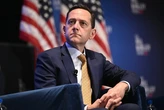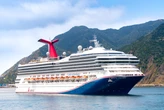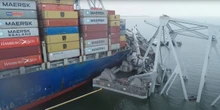Last summer, the Federal Transit Administration announced $1.7 billion in funding for buses—nearly half of which would be zero emission. However, the celebratory moment was muddied by two other developments.
On June 21, just five days before the announcement, Nova Bus said that it was exiting the U.S. market. Then, in August, electric bus manufacturer Proterra filed for bankruptcy. Since 2003, at least 10 bus manufacturers have bowed out of the U.S. market. Now just three remain, according to Jared Schnader, senior director of the bus division at transportation nonprofit CalStart.
Making public buses cleaner is a key part of the Biden administration’s climate agenda and is important for both cities and states to meet their climate goals. But the current shortage of bus manufacturers threatens to derail those efforts.
It’s common knowledge that diesel emissions are terrible for people’s health (and categorized as carcinogenic), but still more than 40% of public buses run on diesel. (Another 30% of buses use natural gas, which, despite the name, isn’t a clean fuel either.)
The U.S. Department of Transportation is pushing for a switch to electric buses, noting that in addition to the climate benefits, agencies can save hundreds of thousands of dollars a year per bus on fuel alone.
Public transit agencies are turning to two technologies to green their fleets: fuel cell electric, which is powered by hydrogen, and battery electric. One of the key differences is the distance they can travel on a full charge. A U.K. study found that hydrogen fuel cell buses had a range of around 290 miles compared to 170 miles for battery electric buses. That said, mileage can vary significantly based on the environment. For example, battery electric buses have struggled in some cold climates because the battery uses energy to warm the bus. (After testing zero-emission buses for 21 years, Oakland, California-based AC Transit plans to use hydrogen fuel cells for the majority of its fleet, in large part because the range is so much better: 300 miles compared to 180.)
PLAYING CATCH-UP
Until recently, California was one of the biggest buyers of electric buses. The state will require public transit agencies to purchase only zero-emission buses starting in 2029, with the goal of phasing out diesel entirely by 2040. According to a CalStart report, the state accounts for 32% of all zero-emission buses nationwide.
But the Bipartisan Infrastructure Law is changing that, dedicating $5.6 billion to cleaner buses. In 2023, Iowa City received $23 million to buy four electric buses that would replace diesel vehicles. The Connecticut Department of Transportation received $26 million to replace older diesel buses with battery electric buses. Other transit agencies are making similar moves.
Despite these positive steps, the U.S. lags behind other parts of the world in its transition. By September 2023, the U.S. had a total of 6,147 zero-emission buses in operation, according to CalStart. In Europe, 6,354 zero-emissions buses were put into service last year alone.
“Europe took a very proactive stance early. They saw the writing on the wall,” Schnader said, adding that the dense populations in European cities allow them to employ battery electric buses more easily because they travel shorter distances.
Meanwhile in the U.S., the proportion of Americans who commute by public transit has been steadily decreasing. It has gone from 9% in 1970 to 5% a half century later, according to a 2021 Urban Institute report. More recently, the pandemic wreaked havoc on public transit, as many white-collar workers began to work from home. A recent U.S. Census report found that the percentage of workers who commute by public transit in the U.S. dropped to 3% in 2022.
But transportation accounts for nearly 30% of the U.S.’s greenhouse gas emissions, and lowering that number is key to the Biden administration’s climate goals.
To get there, the administration will need a healthier bus manufacturing industry. With Europe’s proactive approach, the continent has more than 35 bus manufacturers, according to Schnader. In the U.S., the three suppliers for the bus market—Gillig, New Flyer, and Phoenix Motorcars (which purchased Proterra’s bus manufacturing business)—all face a backlog of orders.
The backlogs have meant delays for public transit agencies that are trying to green their fleets. In 2019, AC Transit had no problems with an order it placed, said Cecil Blandon, the company’s director of maintenance. But with orders after 2020, it saw a three-week delay for hydrogen fuel cell electric buses and a five-month delay for battery electric buses.
KEEPING MANUFACTURERS AFLOAT
With just three bus manufacturers in the U.S., delays like these are likely to continue for the immediate future. So why isn’t the U.S. market more robust? For one, zero-emission buses are incredibly expensive to build. Electric buses can cost around $1 million—roughly twice the amount of a diesel bus. When using federal grants, manufacturers don’t get paid until the public transit agency receives the bus, which can take two years. (While this is standard for both types of buses, the higher cost for electric can make it economically prohibitive for manufacturers.)
This delayed payment system seems to be so deeply ingrained in the industry that it’s not entirely clear where it originated. “This has been the process under federal procurement regulations for public transit buses for as long as I can remember—so for about four decades,” American Public Transportation Association President and CEO Paul P. Skoutelas said in an email.
The White House is working on remedies to that payment system. In February, it brought together transit leaders and bus manufacturers to talk about how transit agencies can help keep the dwindling number of manufacturers afloat.
In tandem with the meeting in February, the FTA published recommendations that encouraged public transit agencies to make payments prior to receiving vehicles. (They’re then able to request reimbursement via the grant process.) The FTA also plans to give priority to agencies applying for grants that follow the recommendations. An FTA spokesperson told Fast Company that advance payments are popular with rail projects, so they could feasibly become more common with buses.
Public transit agencies seem to be on board with updating a payment model that has long been advantageous to them. “We need to move to something that really is more fair in terms of how we approach these things,” Skoutelas said.
Manufacturers are preaching patience as they navigate a tumultuous period. “It’s going to take time, multiple years,” said Stephen King, vice president of strategy and investor relations at Canadian-based New Flyer. “It’s not like we’re going to get all the buses in North America transferred over to battery electric overnight.”
On top of fixing the payment system, some in the industry are hoping to streamline the manufacturing process by standardizing public buses. Schnader said he spoke with a manufacturer who had 93 different window sizes, as public transit agencies have asked for increasingly customized buses through the years. Manufacturers could operate more efficiently if they were able to churn out more standardized buses; there’s some hope that this could be implemented more quickly with zero-emission designs.
There’s also hope that the Bipartisan Infrastructure Law funding might help to bring new manufacturers to the U.S. market, although this would likely be a ways out if it happened.
“We’re all trying to figure this out. . . . If this was easy, we would have done it 15 to 20 years ago,” Schnader said. “My hope is that by 2030, 100% zero-emission buses are bought that year. I think we can make it there. We just have to keep investing in the technology and we have to help the [manufacturers].”








No comments